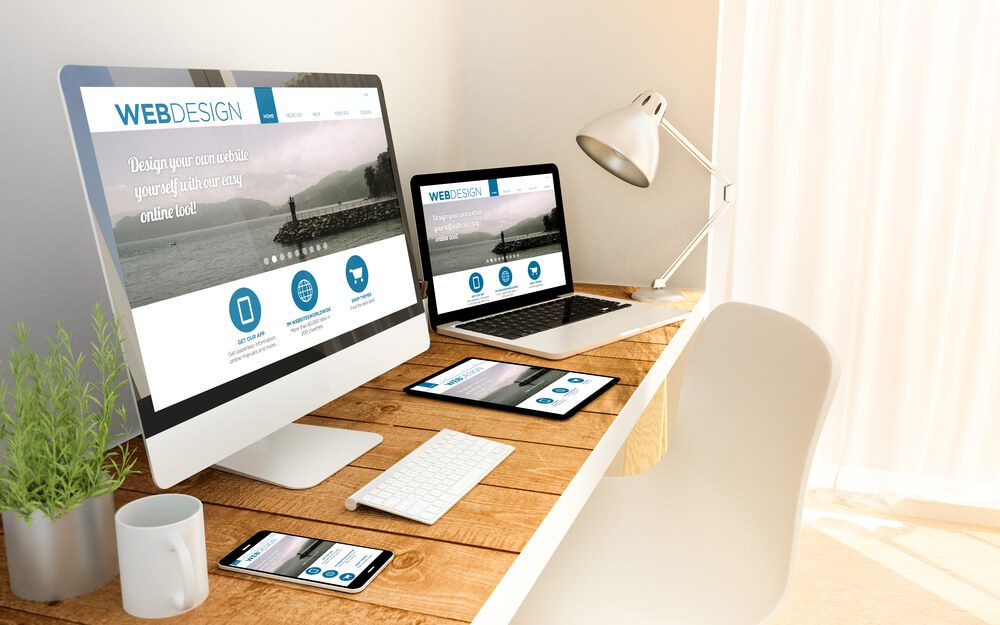
Get Great Traffic Results by Using Web Design Best Practices
What is the point of having a website if no one ever visits it? In the Chicago market, driving traffic to your brand’s website can be difficult. However, before you get discouraged, know that you can attract site visitors by following the best practices in web design. With the help of Chicago web design services, your business can enjoy great online visibility.
In this article, we discuss the following practices:
- Prioritizing responsiveness
- Ensuring fast loading speeds
- Implementing intuitive navigation
- Optimizing for search engines
- Integrating social media
- Using brand-driven design
- Paying attention to layout and typography
Let’s go!
To learn how Digital Authority Partners can create a standout website for you, watch this video!
Prioritizing Responsiveness
Over half of all internet traffic worldwide comes from mobile devices. To get your share of exposure, you must build a responsive website. Your site must automatically adjust its layout and elements according to the user's device. It must remain pleasing to the eyes and easy to navigate, no matter the screen size.
Building a responsive web design is synonymous with being mobile-friendly. Your site's content must fit the screen, whether the user is on a smartphone or a tablet. Users who do not need to zoom in or scroll horizontally to view content are more likely to engage with your website.
Search engines such as Google favor sites that are responsive and mobile-friendly. They are highly likely to rank high in search engine results pages (SERPs), thus boosting traffic to your site.
Ensuring Fast Loading Speeds

Responsiveness alone is not enough to boost website traffic, however. Your site should also be really fast. With 47% of users unwilling to wait longer than two seconds for a web page to load, being fast is not optional.
Thankfully, accelerating your site's loading speed is not rocket science. You have plenty of options for speeding up your site, including:
- Optimizing image and video sizes
- Minifying and compressing code
- Using browser caching
- Utilizing content delivery networks (CDNs)
These techniques are just some of the ways you can speed up site loading. You just have to reduce the amount of data transferred between the user's device and your site's server. If you are having trouble with loading speeds, consider working with web design experts who can effectively use these strategies.
Implementing Intuitive Navigation
When users visit your website, they are looking for something. It can be information, a product, or a service. It is your job to ensure they can easily find what they seek. To do this, you need to implement intuitive navigation.
Websites with intuitive navigation logically and hierarchically organize their content. You achieve this by categorizing information and creating clear navigation menus. The aim is to guide users to the desired section of your website. You must also add descriptive labels and submenus to enhance your navigation system.
Furthermore, you must add in-site search functionality. This is especially important for larger websites, allowing users to quickly find specific content.
Optimizing for Search Engines

Building a website without optimizing it for search engines is like opening a store in a hidden, remote location. No matter how gorgeous your store is or how good your products are, no one will find them.
You must do search engine optimization (SEO) to prevent your site from fading into obscurity. Doing so makes your site more likely to appear in SERPs, attracting organic traffic. SEO involves the use of tactics that make it favorable in the eyes of search engine algorithms. Some of these tactics include:
- Conducting keyword research
- Structuring content with header tags
- Implementing a logical site structure
Implementing these techniques helps search engines understand the relevance of your website to specific search queries. Meaning people who are looking for products and services such as yours are more likely to find you.
Integrating Social Media
Social media has become a fixture in any marketer's toolbox today. Integrating your website into social media is the way to go if you want to promote your site and drive more traffic. Doing so allows you to leverage the power of various social media platforms, such as Facebook, Twitter, and Instagram. On these platforms, engaging with your audience and promoting content is easier.
Here are some ways to integrate social media into your web design:
- Add social media sharing buttons to your website. This allows visitors to easily share site content with their social networks, expanding your reach and driving more traffic to the site.
- Embed social media feeds on your website. This lets users see the latest posts and updates without leaving the page.
- Provide prominent links to your social media profiles. This encourages visitors to connect with your brand on multiple platforms. By extension, this fosters brand loyalty and increases your online presence.
Using Brand-Driven Design

A website is a reflection of the brand's identity and values. If the design is all over the place, consumers can have trouble recognizing your business. When they cannot distinguish you from a sea of brands, how can they consciously go to your website?
Consistency in branding is crucial for building trust and recognition. Incorporating your brand's logo, color scheme, and visual elements into the web design creates a cohesive user experience. You must study which fonts and typography styles best fit your business. Which ones convey the right tone? Which ones carry a personality that matches the brand's?
When designing the website layout, make sure it strengthens your brand's image. The layout must be appealing and showcase your products, services, or content in a way that customers have previously experienced. Do not hesitate to invest in visuals because every business needs appealing graphic design.
Summing Up
Do not expect your website to go from zero traffic to one hundred overnight. Getting great traffic results takes time, even when using the best practices described above. If you want to ensure you properly execute all the techniques, consider working with an expert. Contact Digital Authority Partners to discover how we can help you build a high-traffic website.
Want To Meet Our Expert Team?
Book a meeting directly here




